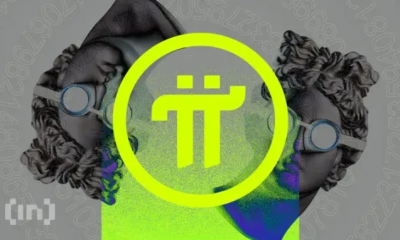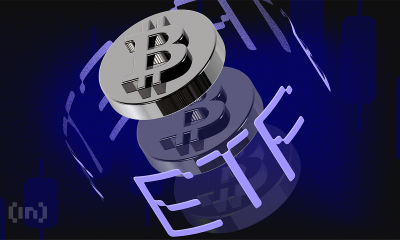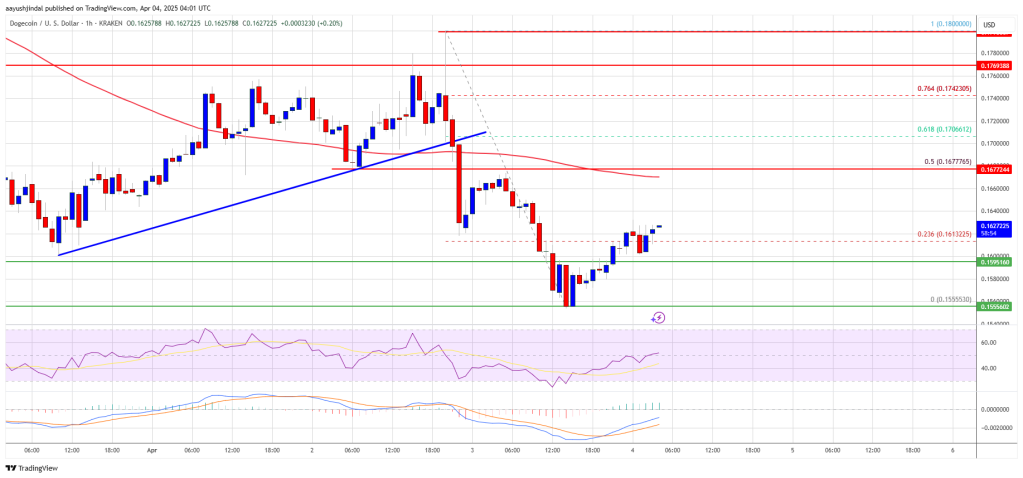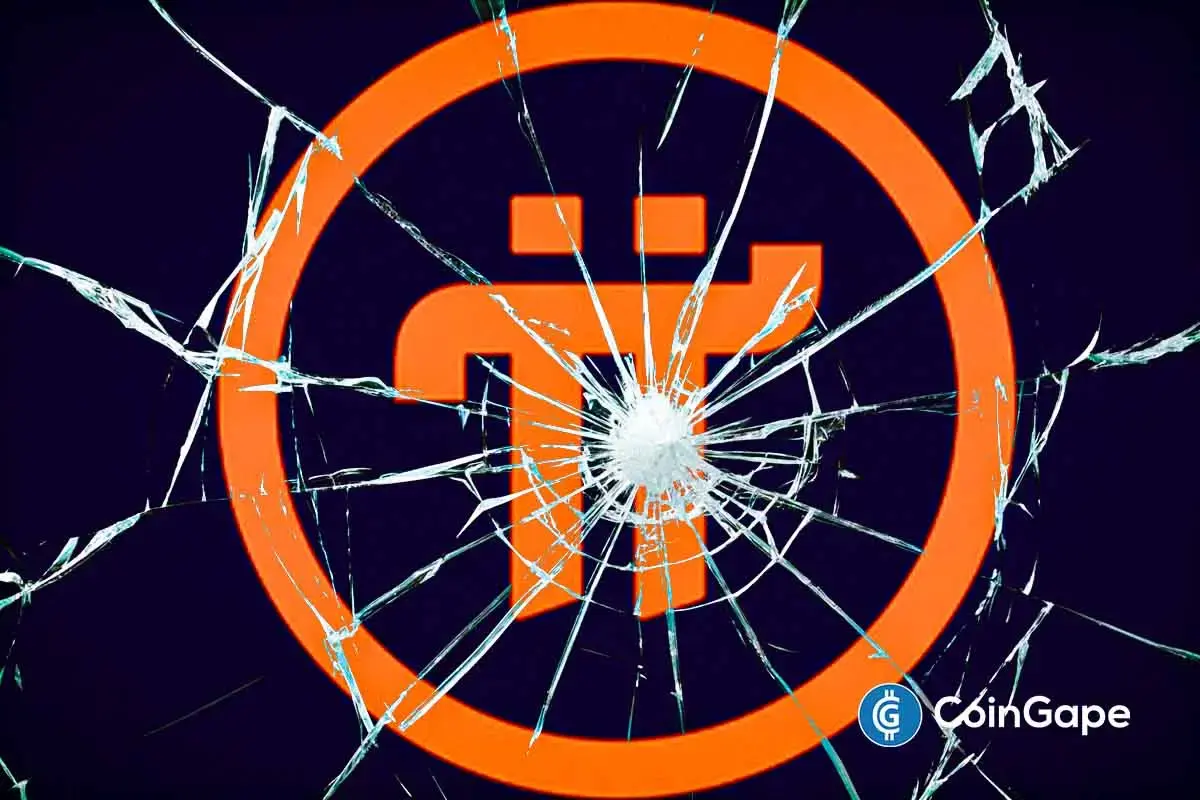Market
Why Telegram’s Tap-to-Earn Segment Is Winning Investors


The rapid rise of tap-to-earn games on Telegram, powered by The Open Network (TON) blockchain, has attracted significant attention — and funding — from venture capitalists. Investors are making substantial bets on Telegram’s tap-to-earn games like Notcoin, Hamster Kombat, and Catizen, seeing them as the future of Web3 gaming.
But what exactly is driving these investment decisions, and how do investors envision the future of tap-to-earn? BeInCrypto recently interviewed Animoca Brands, one of the biggest TON validators, and Hashkey Capital, which has made significant investments and formed partnerships with Catizen.
Investors Eye Social Experiences as the Future of Tap-to-Earn Games
Undeniably, one of the key reasons venture capitalists are drawn to Telegram’s tap-to-earn ecosystem is its vast and engaged user base. With 950 million active users as of July 2024, the platform offers an unparalleled audience for developers looking to launch and scale games. This kind of organic reach dramatically reduces user acquisition costs, which is a major selling point for investors.
Furthermore, its crypto-native infrastructure sets Telegram apart from other platforms in the Web3 gaming space. The integration of TON blockchain allows for seamless transactions, reducing friction between the gaming experience and the user’s wallet. This ease of use is a significant draw for both developers and investors, as it allows instant monetization without the hurdles typically associated with blockchain adoption.
“Telegram is one of the few platforms where Web3 mechanics are baked into the experience. The ability to move from gameplay to crypto transactions without leaving the app is a huge competitive edge,” Junbo Yang, Investment Manager at Hashkey Capital, explains.
For investors, this integrated experience makes Telegram a prime candidate for further investment. The platform’s low transaction fees, scalability, and growing list of mini-apps ensure that developers can continue to innovate and retain users without the technical barriers that often plague Web3 adoption.
As TON ecosystem and tap-to-earn games grow, investors remain optimistic about the future of this segment. For instance, Hamster Kombat alone has attracted over 300 million users across 190 countries, with its upcoming HMSTR airdrop poised to be one of the largest in the crypto space.
Read more: What Is Hamster Kombat?
Meanwhile, Catizen has successfully built a loyal user base while optimizing its monetization strategy. Likewise, Notcoin attracted over 40 million global users and executed one of the year’s largest airdrops, solidifying its position as a key player in TON ecosystem.
Both Hashkey Capital and Animoca Brands see the success of these games as just the beginning. They believe as developers improve game mechanics, they will also discover new ways to retain users, moving beyond simple rewards to social and immersive experiences.
Why Telegram Could Drive the Next Web3 Boom?
Furthermore, the investors view these games as a proof of concept, demonstrating the scalability of the tap-to-earn model and its ability to retain users beyond initial incentives. This success reveals significant potential for growth and expansion within the tap-to-earn sphere.
In a recent exclusive interview with BeInCrypto, Yat Siu, the co-founder and executive chairman of Animoca Brands, strongly advocated integrating blockchain gaming into Telegram. He sees that the built-in audience allows games to scale quickly without costly marketing campaigns—a crucial factor for venture capitalists eyeing high returns.
“The next 100 to 200 million users in Web3 will come from Telegram and its gaming ecosystem,” Siu remarks.
Investors are primarily focused on three factors: user acquisition, scalability, and retention. However, they are also particularly excited about the potential for long-term monetization. Catizen, for example, stands out for its ability to retain users and optimize their lifetime value (LTV), showcasing sustainable growth and a profitable tap-to-earn model.
Junbo Yang highlights how Catizen and similar games set the stage for future development by prioritizing monetization and long-term user engagement.
“The early success of Catizen in monetizing its user base offers a blueprint for how other developers can scale their games,” Yang notes.
These investors’ perspectives align with the game teams’ long-term visions. In an email to BeInCrypto, the Hamster Kombat team revealed their plan to evolve into a multi-game platform.
“After the first airdrop, we will launch the second season with a massive expansion, allowing players to choose from multiple games to play. This begins the transformation of Hamster Kombat from a game into a gaming platform, similar to how Valve moved on from launching cult-status games to Steam, the largest game marketplace for PCs,” they elaborated.
Turning Setbacks into Growth: Why Investors Remain Optimistic Despite TON’s Hiccups
While the tap-to-earn model has proven its ability to attract users, the key challenge is keeping them engaged beyond initial airdrops and rewards. Some critics have raised concerns about mercenary users—those who join games solely to earn tokens—but investors see this as a short-term challenge.
However, investors believe that as developers increasingly adopt the tap-to-earn model, they will also find ways to extend user lifecycles, enhancing its sustainability. Yat Siu believes that the tap-to-earn model, while currently reward-driven, is laying the foundation for a much larger gaming ecosystem.
“Tap-to-earn is just the beginning. Once users enter the ecosystem, the goal is to build community and social experiences that keep them engaged for reasons beyond just token rewards,” Siu argues.
In addition to the sustainability concerns, the Telegram ecosystem has faced recent challenges. For instance, earlier in August, BeInCrypto reported that TON blockchain experienced an outage, temporarily halting block production for several hours. This incident raised concerns about the network’s ability to handle future surges in activity, especially with the increasing number of users participating in tap-to-earn games.
Addressing the issue, Yat Siu acknowledged the outage but remained confident in TON’s resilience. Siu emphasized that TON is still in its early stages and believes that such challenges are part of the network’s growth process. He sees TON’s potential to become even larger than Telegram itself in the future, driving the platform’s growth.
“TON itself should remain as a censorship-resistant decentralized platform like other chains, but the projects and dApps themselves can implement measures to ensure stability,” he said.
Read more: Top 7 Telegram Tap-to-Earn Games to Play in 2024
Regardless of these challenges, venture capitalists remain confident in the potential of tap-to-earn. The coming years will reveal whether this model will secure its place as a lasting feature in Web3 gaming, but for now, investors are fully committed.
Disclaimer
Following the Trust Project guidelines, this feature article presents opinions and perspectives from industry experts or individuals. BeInCrypto is dedicated to transparent reporting, but the views expressed in this article do not necessarily reflect those of BeInCrypto or its staff. Readers should verify information independently and consult with a professional before making decisions based on this content. Please note that our Terms and Conditions, Privacy Policy, and Disclaimers have been updated.
Market
What to Expect on May 7

The highly anticipated Pectra upgrade will launch on the Ethereum (ETH) mainnet on May 7, 2025, after overcoming a series of technical challenges and delays in the testnet phase.
Ethereum developers announced the date during the All Core Developers Consensus (ACDC) meeting on April 3, 2025.
Pectra Upgrade Countdown Begins
The upgrade was initially slated for a tentative mainnet launch on April 30. However, Ethereum developers have postponed the launch by one week.
“We’ll go ahead and lock in May 7 for Pectra on mainnet,” Ethereum Foundation researcher Alex Stokes said.
In preparation for this, Stokes confirmed that client releases will be made available by April 21, ensuring that all users have the necessary updates and tools ahead of the mainnet launch. On April 23, a detailed blog post outlining the Pectra mainnet will be published.
The Pectra upgrade will introduce 11 Ethereum Improvement Proposals (EIPs) to enhance various aspects of the network. Notably, three EIPs are dedicated to improving the validator experience.
The first is EIP-7251. This will increase the staking limit for validators from 32 ETH to 2,048 ETH per validator. This change aims to enhance capital efficiency for large stakers and staking pools.
“This simplifies the staking experience, allowing users to manage multiple validators under one node instead of several,” an analyst remarked.
Moreover, EIP-7002 introduces execution-layer triggerable withdrawals, giving validators more control. Meanwhile, EIP-6110 reduces the deposit processing delay from about 9 hours to just 13 minutes.
The upgrade will also include EIP-7702, a major step toward account abstraction. It allows Externally Owned Accounts (EOAs) to gain smart contract functionality while maintaining simplicity. This enables features like transaction batching, gas sponsorship (where third parties pay fees), passkey-based authentication, spending controls, and asset recovery mechanisms.
Finally, the upgrade increases blob capacity through EIP-7691. In addition, EIP-7623 helps manage the increased bandwidth requirements. These updates aim to make Ethereum more scalable, efficient, and user-friendly.
It is worth noting that the road to the mainnet launch has not been without hurdles. Two previous tests on the Holesky and Sepolia test networks failed to finalize properly. However, Pectra achieved full finalization on the Hoodi testnet on March 26, marking a significant milestone toward the successful deployment of the upgrade.
Despite the technical progress, ETH continues to face market challenges.

Data from BeInCrypto shows that ETH dropped 4.8% over the past week, with weekly losses extending to 17.1%. At the time of writing, the altcoin was trading at $1,822, reflecting a small daily gain of 0.8%.
Disclaimer
In adherence to the Trust Project guidelines, BeInCrypto is committed to unbiased, transparent reporting. This news article aims to provide accurate, timely information. However, readers are advised to verify facts independently and consult with a professional before making any decisions based on this content. Please note that our Terms and Conditions, Privacy Policy, and Disclaimers have been updated.
Market
XRP Futures and Illinois Lawsuit Relief

Coinbase filed with the US Commodity Futures Trading Commission (CFTC) to launch futures contracts for Ripple’s XRP token.
The move comes after a positive development for the crypto derivatives market in the US, reflecting shifting regulatory ties in the country.
Coinbase Files for XRP Futures Trading With CFTC
Coinbase Derivatives has submitted a filing to self-certify XRP futures. It will provide a regulated, capital-efficient means for market participants to gain exposure to XRP. The new contract could go live as soon as April 21.
“We’re excited to announce that Coinbase Derivatives has filed with the CFTC to self-certify XRP futures – bringing a regulated, capital-efficient way to gain exposure to one of the most liquid digital assets. We anticipate the contract going live on April 21, 2025,” read the announcement.
Meanwhile, the official filing indicates that the XRP futures contract will be a monthly cash-settled and margined contract trading under the symbol XRL.
Each contract represents 10,000 XRP and will be settled in US dollars. Trading will be available for the current month and two subsequent months. As a protective measure, trading will be temporarily halted if the spot XRP price moves more than 10% within an hour.
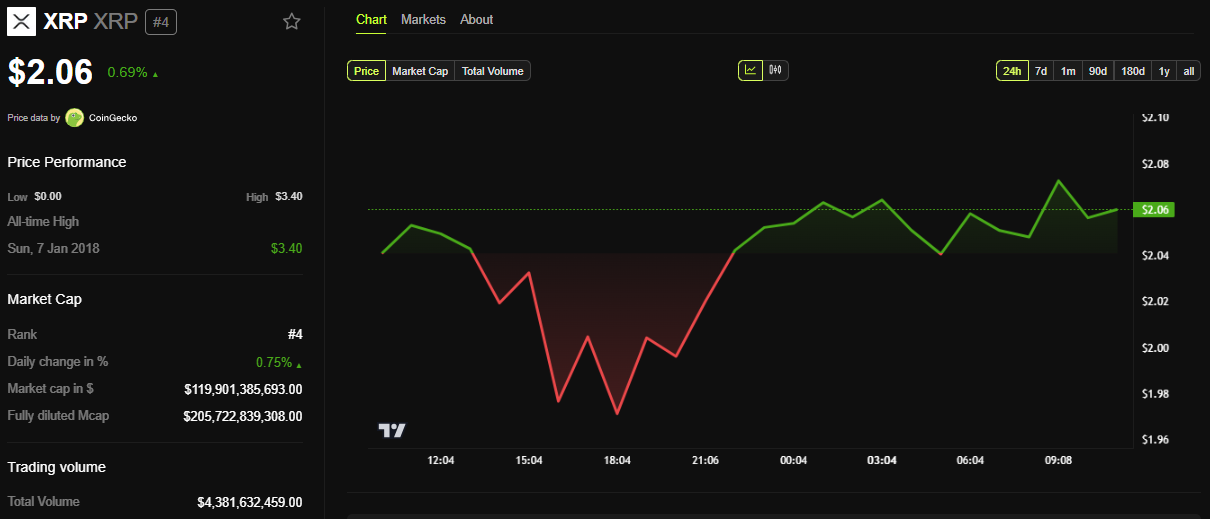
The Coinbase Exchange also confirmed that it has engaged with Futures Commission Merchants (FCMs) and other market participants. Both references reportedly expressed support for the launch.
However, Coinbase is not the first US-based exchange to introduce regulated XRP futures. In March, Chicago-based Bitnomial launched what it advertised as the country’s first CFTC-regulated XRP futures contract.
For Coinbase, however, the boldness comes after the CFTC eased key regulatory hurdles for crypto derivatives trading. As BeInCrypto reported, this signaled a more accommodating stance towards the sector.
“Pursuant to Commodity Futures Trading Commission (“CFTC” or “Commission”) Regulation 40.2(a), Coinbase Derivatives, LLC (the “Exchange” or “COIN”) hereby submits for self-certification its initial listing of the XRP Futures contract to be offered for trading on the Exchange…,” an excerpt in the filing indicated.
This suggests that the commodities regulator’s shift, revoking previous crypto-related guidelines, may boost institutional confidence. For XRP, this development bolsters confidence in the asset’s previously contentious status following Ripple’s recent regulatory breakthrough.
“Coinbase Derivatives’ filing with the CFTC to self-certify XRP futures aims to legitimize XRP trading by offering a regulated, capital-efficient product for investors,” one user remarked.
The futures contract might also help the odds of XRP ETF approval. Recently, the SEC delayed several applications to create one, and its status is in limbo.
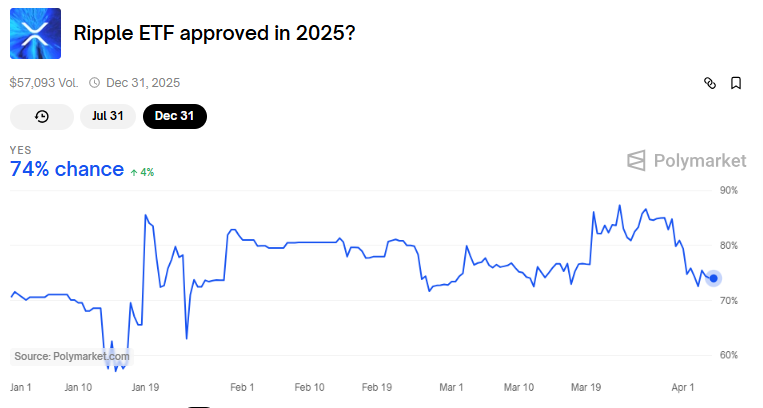
Data on Polymarket shows bettors see a 74% chance for XRP ETF approval in 2025 and a more modest 34% by July 31.
Regulatory and Legal Developments Favor Coinbase
Elsewhere, the timing of this filing aligns with recent favorable regulatory developments for Coinbase. Reports suggest Illinois intends to drop its lawsuit against the exchange over its staking services.
Up to 10 states filed a lawsuit against Coinbase in June 2023 alleging that its staking program constituted unregistered securities offerings.
This recent development makes Illinois the fourth state to withdraw legal action against Coinbase. Vermont, South Carolina, and Kentucky also dismissed their cases on March 13, 27, and 31, respectively.
However, the cases remain active in Alabama, California, Maryland, New Jersey, Washington and Wisconsin.
These legal retreats coincide with the US SEC’s (Securities and Exchange Commission) February decision to abandon its federal lawsuit against Coinbase. BeInCrypto reported that this development marked a broader shift in the regulatory approach under the current administration.
“Regulators are losing steam, and Coinbase is stacking quiet courtroom wins. Staking’s future in the US might just be back on track,” a user commented.
Illinois’ decision to drop its lawsuit comes as the state advances a Bitcoin strategic reserve bill. Specifically, Illinois State Representative John M. Cabello introduced House Bill 1844 (HB1844), highlighting Bitcoin’s potential as a decentralized, finite digital asset.
“A strategic bitcoin reserve aligns with Illinois’ commitment to fostering innovation in digital assets and providing Illinoisans with enhanced financial security,” the bill read.
Disclaimer
In adherence to the Trust Project guidelines, BeInCrypto is committed to unbiased, transparent reporting. This news article aims to provide accurate, timely information. However, readers are advised to verify facts independently and consult with a professional before making any decisions based on this content. Please note that our Terms and Conditions, Privacy Policy, and Disclaimers have been updated.
Market
Dogecoin (DOGE) Bleeds Further—Fresh Weekly Lows Test Investor Patience

Dogecoin started a fresh decline from the $0.180 zone against the US Dollar. DOGE is consolidating and might struggle to recover above $0.1680.
- DOGE price started a fresh decline below the $0.1750 and $0.170 levels.
- The price is trading below the $0.1680 level and the 100-hourly simple moving average.
- There was a break below a key bullish trend line forming with support at $0.170 on the hourly chart of the DOGE/USD pair (data source from Kraken).
- The price could extend losses if it breaks the $0.1550 support zone.
Dogecoin Price Dips Again
Dogecoin price started a fresh decline after it failed to clear $0.180, like Bitcoin and Ethereum. DOGE dipped below the $0.1750 and $0.1720 support levels.
There was a break below a key bullish trend line forming with support at $0.170 on the hourly chart of the DOGE/USD pair. The bears were able to push the price below the $0.1620 support level. It even traded close to the $0.1550 support.
A low was formed at $0.1555 and the price is now consolidating losses. There was a minor move above the 23.6% Fib retracement level of the downward move from the $0.180 swing high to the $0.1555 low.
Dogecoin price is now trading below the $0.170 level and the 100-hourly simple moving average. Immediate resistance on the upside is near the $0.1650 level. The first major resistance for the bulls could be near the $0.1680 level. It is near the 50% Fib retracement level of the downward move from the $0.180 swing high to the $0.1555 low.
The next major resistance is near the $0.1740 level. A close above the $0.1740 resistance might send the price toward the $0.180 resistance. Any more gains might send the price toward the $0.1880 level. The next major stop for the bulls might be $0.1950.
Another Decline In DOGE?
If DOGE’s price fails to climb above the $0.170 level, it could start another decline. Initial support on the downside is near the $0.160 level. The next major support is near the $0.1550 level.
The main support sits at $0.150. If there is a downside break below the $0.150 support, the price could decline further. In the stated case, the price might decline toward the $0.1320 level or even $0.120 in the near term.
Technical Indicators
Hourly MACD – The MACD for DOGE/USD is now losing momentum in the bearish zone.
Hourly RSI (Relative Strength Index) – The RSI for DOGE/USD is now above the 50 level.
Major Support Levels – $0.1600 and $0.1550.
Major Resistance Levels – $0.1680 and $0.1740.
-

 Market20 hours ago
Market20 hours agoBitcoin’s Future After Trump Tariffs
-

 Market24 hours ago
Market24 hours agoIP Token Price Surges, but Weak Demand Hints at Reversal
-

 Ethereum23 hours ago
Ethereum23 hours agoEthereum Trading In ‘No Man’s Land’, Breakout A ‘Matter Of Time’?
-

 Market23 hours ago
Market23 hours agoHBAR Foundation Eyes TikTok, Price Rally To $0.20 Possible
-

 Altcoin23 hours ago
Altcoin23 hours agoJohn Squire Says XRP Could Spark A Wave of Early Retirements
-

 Market22 hours ago
Market22 hours ago10 Altcoins at Risk of Binance Delisting
-
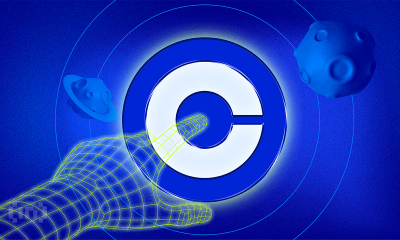
 Market21 hours ago
Market21 hours agoEDGE Goes Live, RSR Added to Roadmap
-

 Regulation19 hours ago
Regulation19 hours agoUS Senate Banking Committee Approves Paul Atkins Nomination For SEC Chair Role








